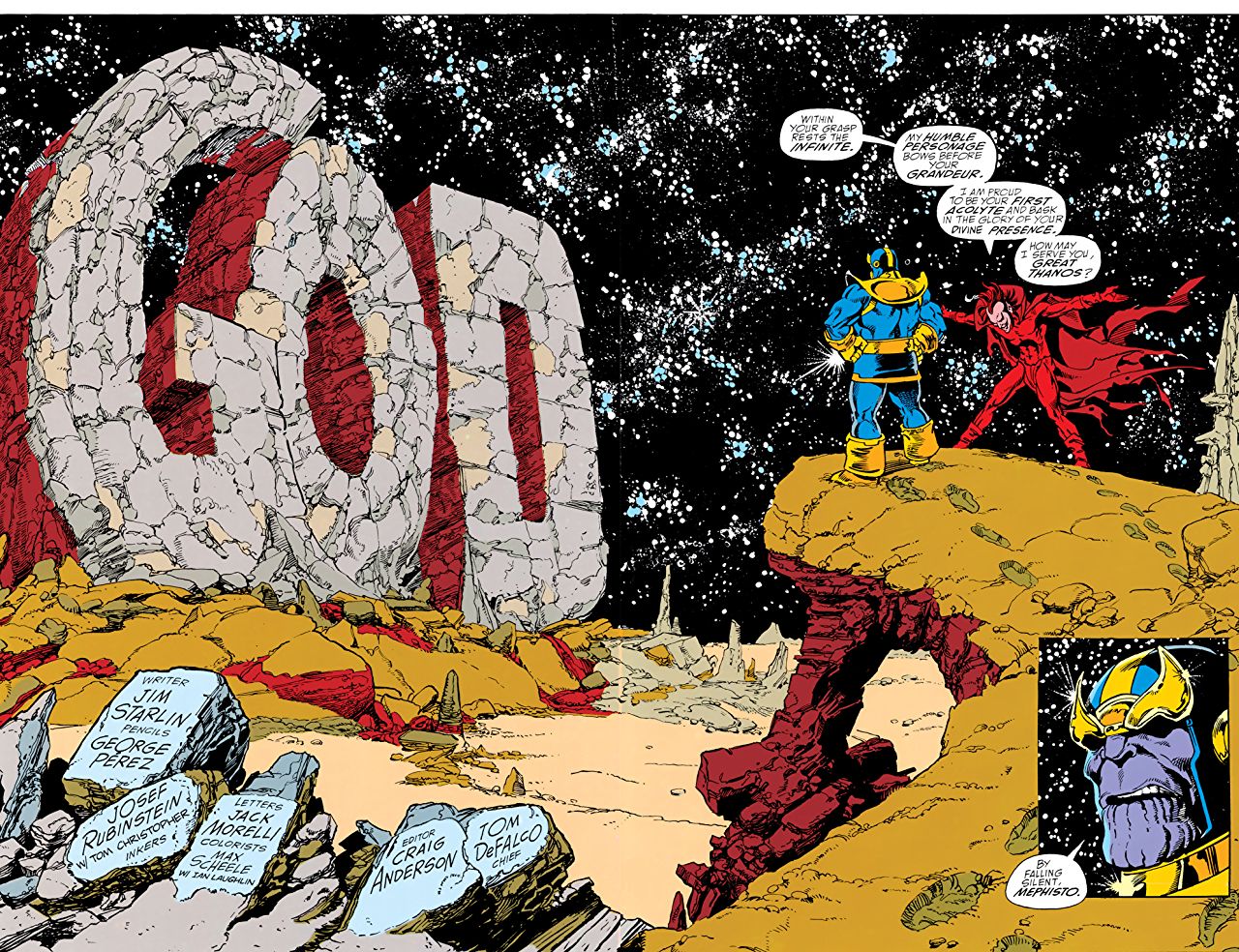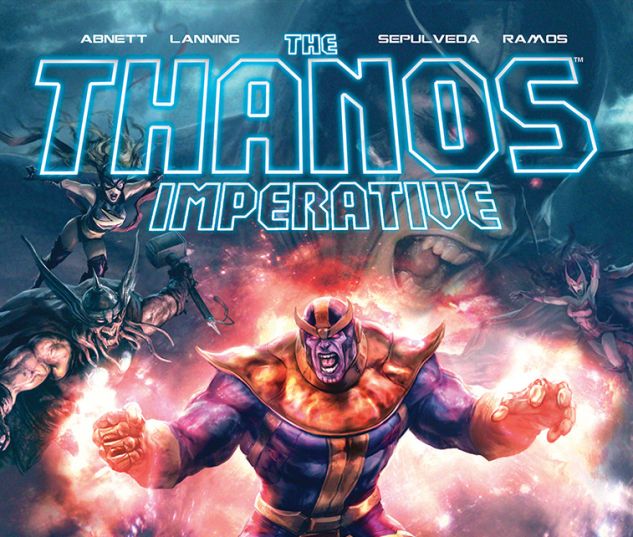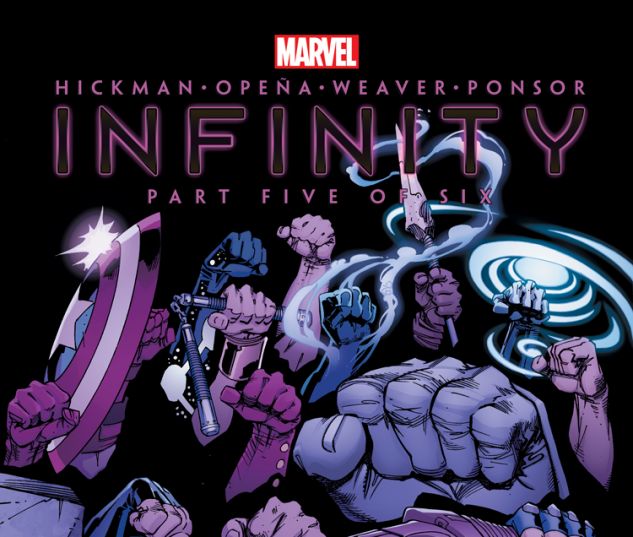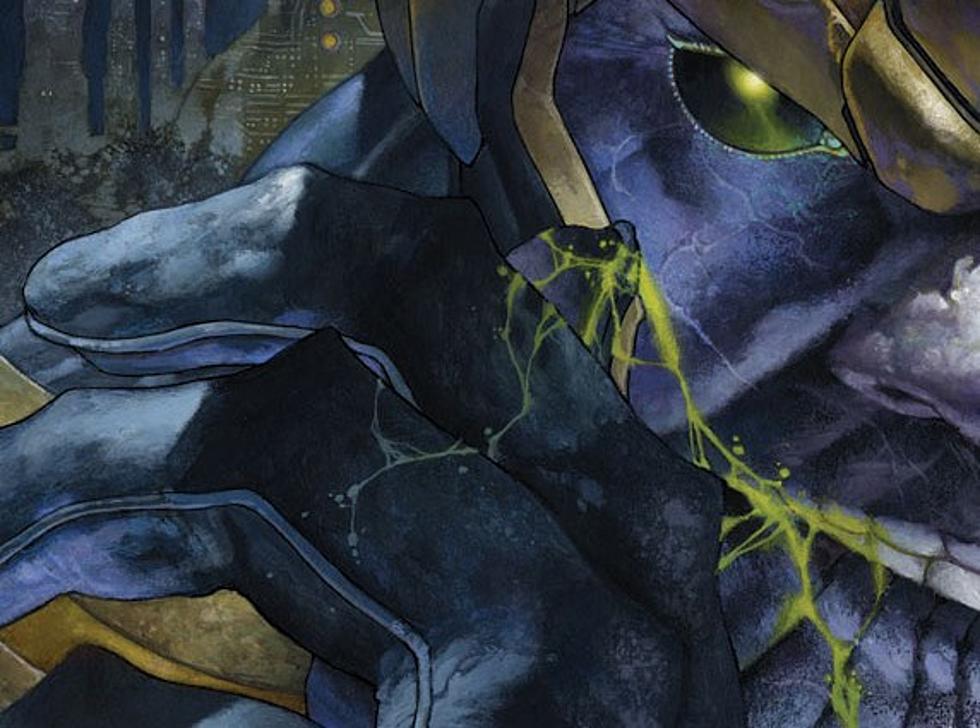Avengers: Infinity War Comics Reading Order
Which Marvel comics should you read before (or after) Avengers: Infinity War? We have a definitive reading guide for you!
Avengers: Infinity Warbrings fans the first extended appearance on screen of Thanos, a character with a surprisingly rich history for someone who was created as a ripoff of Darkseid/musing on the concept of nihilism by a bunch of really stoned teenagers – honestly, I’m not sure which one I’m supposed to cross out there. Thanos was both of those things, and so much more, and he became one of the Marvel Universe’s most feared villains almost as soon as he burst on the scene.
We’ve got the perfect Avengers: Infinity Warreading guide for you. It’s full of the Marvel comics you’re going to want to check out before and after the movie. We’ve also got some of the stories that might also have a little influence on Avengers: Endgame so you can be ready for all the references and winks at comics fans.

The Infinity Gauntlet
One of the most impressive things about Infinity Warwas the very specific dialogue in the trailer about Thanos wanting the Infinity Stones to kill “half the universe.” That is a direct lift from The Infinity Gauntlet, the story that moved Thanos from a bit villain in Jim Starlin’s psychedelic ’70s Marvel space stories to one of the primary bad dudes of the entire Marvel Universe.
read more: Every Version of Marvel’s Infinity Gauntlet Story
The Infinity Gauntlethad Thanos, furious that he was being friendzoned by an abstract concept, obtain the titular macguffin to impress Death by killing half the living beings in the universe. He does, and he is opposed by Adam Warlock and the universal entities who make up the real power of the galaxy – Eternity, Eon, Galactus, the Living Tribunal, etc. (to be clear, Etcetera is not a character in the Marvel Universe). Adam Warlock and Doctor Strange gather a team of heroes together, and teamed with the universal entites, everyone beats the hell out of Thanos until he tricks himself into not having the gauntlet any more.
I snark, but the thing about The Infinity Gauntletis it’s actually really good. Starlin’s writing is more thoughtful and introspective than your typical big summer blockbuster, and George Perez’s art on the first half is outstanding. This is a must-read if you’re a fan of anything Marvel at all. It has a sequel that’s actually called Infinity War, but that’s not as essential a read, and doesn’t seem to have anything to do with the movie.
Read Infinity Gauntlet on Amazon

Annihilation, Guardians of the Galaxy, The Thanos Imperative
Starting with Annihilation in 2006 and ending with The Thanos Imperative, writing duo Dan Abnett and Andy Lanning’s time with the Marvel cosmic characters was foundational for both the future of Marvel Comics and for the Marvel Cinematic Universe. Their Guardians of the Galaxy,which grew out of Annihilation: Conquest, is the basis for the MCU version of the Guardians. It also happens that this run of comics was INCREDIBLE.
read more – Every Marvel Easter Egg in Avengers: Infinity War
The era began with a shock invasion of the galaxy by Annihilus and the Negative Zone, where Drax was remade from a monosyllabic killing machine to…a slimmed down, knife-wielding killing machine…and Thanos was helping Annihilus tap into the Power Cosmic, which they were harnessing from a captured Silver Surfer and Galactus. Thanos was killed by Drax at the end of the first series, and then the galaxy had to live through an invasion by the Ultron-led Phalanx; a war between the Shi’ar and the Kree; and a giant tear in the fabric of reality before Thanos was resurrected by the Universal Church of Truth. He was revealed as an avatar of Death, the universal concept and his forever alone internet girlfriend, when the tear in the fabric of reality was discovered to be the point of entry for a parallel universe where death had been conquered by Cthulu and Captain Mar-vell. Thanos quite predictably went apeshit and killed everything in a universe where nothing could be killed.
This era of Marvel cosmic was truly magnificent. Start with Annihilation and then go from there!

Infinity
Jonathan Hickman’s Avengers was enormous and wonderful, and as it turns out extremely important to Avengers: Infinity War. Two things from that era seem to be key to the plot of the movie. The first is how epic and large the Avengers team becomes. Avengers(the big team adventure book) starts with Iron Man telling Captain America “We have to get bigger.” And eventually the team comes to encompass…pretty much every Marvel hero, along with (at varying points) Doctor Doom, Molecule Man, Thanos, Corvus Glaive, Black Swan, Proxima Midnight, and Terrax the Parallel Universe Tamer. The movie Avengers team seems similarly stuffed, so I expect many similar dynamics.
read more – How Thanos Could Be Defeated in Avengers: Endgame
The other component of Hickman-era Avengers that is crucial to Infinity Waris the Black Order, which we weent into detail about here. The whole design aesthetic of this movie seems to be heavily influenced by the art from Mike Deodato and Jerome Opena. That’s a good thing.

Thanos Rising
Want to know how Thanos became an omega-level MRA? Jason Aaron and Simone Bianchi’s Thanos Risingis the place to go.
read more: Complete Schedule of Upcoming Marvel MCU Superhero Movies
This story shows Thanos’ origins – as a Deviant (a mutant Eternal) on the moon Titan, Thanos’ mother had a nervous breakdown immediately upon his birth. He went through life a passive, almost passionately nonviolent person until he discovered his true calling in life: killing as many people as he had to to get Death to notice him.
This comic is dark and weird and beautiful to look at, if extremely European in aesthetic. Aaron’s writing is almost always good, and paired with Bianchi’s sweeping painted art, it’s a great comic.
